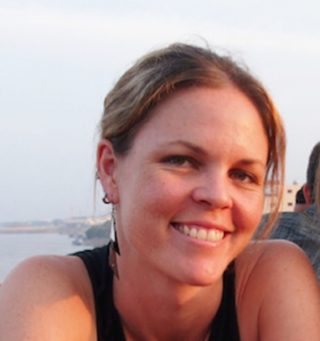Nearly two weeks into the expedition, our cruise has achieved a number of impressive successes already: chasing the eddy, characterizing it, and tracking its features. The next challenge is an engineering one – sampling the eddy’s deep chlorophyll maximum (DCM) in real-time at a depth of ~100 meters, more than twice the depth recommended for recreational SCUBA diving. Inside the Long Range Autonomous Underwater Vehicle (LRAUV), the Environmental Sample Processor (ESP) operates at 1 atmosphere (atm) of pressure, the same amount of pressure we feel standing on the back deck of the Falkor. At 100m below the surface, however, the outside of the vehicle is at 9.67 atm of pressure – water is heavy!
Under Pressure
Typically, instruments at depth are designed to not take on water, so the ESP must be very careful when sampling from the outside. The computers that operate the LRAUV need to stay dry, but the sampler needs to take in seawater at higher pressures, creating an issue that is not simple to solve. Scientists and engineers at the Monterey Bay Aquarium Research Institute (MBARI) began working on the ESP concept over 15 years ago. During this cruise, we are using the 3rd generation ESP, which has been modified to integrate into a LRAUV. This system was designed to track and sample features like the DCM in the open ocean.

External Water, Internal Filter
Inside the LRAUV, the ESP carousel holds 60 cartridges. When triggered for sampling, the cartridge allows external water to flow across an internal filter that collects microbial cells (0.2um). The flow-through water (a.k.a. filtrate) is released back into the environment, and a preservative is added to the filter to fix the microbes for further processing back on land. Since this sounds like a relatively simple procedure, we opened up one of the sampling cartridges to show you just how many specialized components are involved, including tiny screws and baby o-rings.

Sampling With a New Level of Precision
During this first leg of our cruise on the Falkor, we have been exploring novel and cutting edge ways to find and sample microbes in the ocean. One of our final tests was to send Aku on a mission to track the eddy DCM continuously for several days collecting seawater every 3 hours. Aku has now surfaced and the mission appears to have been a success! As the first leg of our Falkor expedition winds down, we will recover Aku (and Opah, which has also been running survey missions) from the ocean, open up the ESP, and extract the filters from the cartridges. These samples are the very first samples of their kind. Never before in microbial oceanography have we been able to sample the the open ocean DCM with this level of precision. We do not know what information these novel samples hold just yet, but everyone is excited and relieved that testing has been successful. We will return to the University of Hawai‘i Marine Center in a few days to swap out some of the SCOPE and MBARI team members before heading back out to sea for more great research onboard the Falkor.

